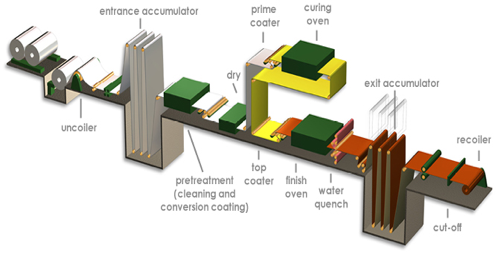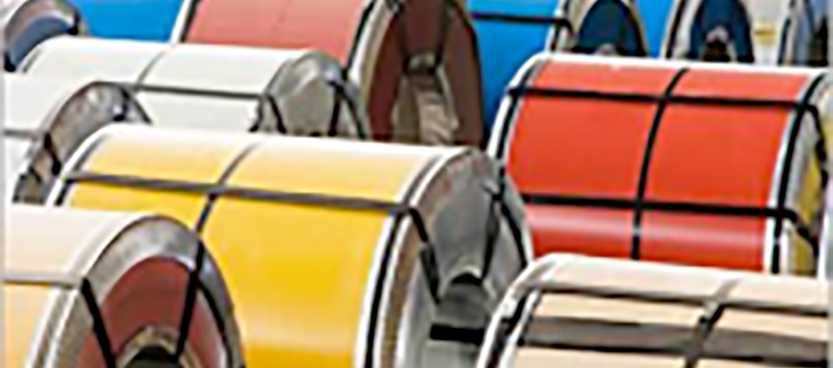Coil Coating Process Analysis
Over 800 million tons of coil-coated metal are produced and shipped annually in North America alone. Coil coating (see Diagram I) is a very efficient way to produce a uniform, high quality, coated finish over metal in a continuous automated fashion. Coil coating is also referred to as pre-painted metal, because the metal is painted prior to, rather than after, fabrication.
In the coil coating process, the metal coil is first unwound, cleaned and pre-treated, applied on a flat continuous sheet, heat cured, cooled and rewound for shipment. At the fabricator, it is then cut to the desired size and formed into its finished shape. Versus most other application methods, coil coating efficiency is nearly 100%. Application is at very high line speeds as modern coil lines can run at speeds as high as 700 feet per minute and cure the applied paint in 15 – 45 seconds. As opposed to a spray-applied coating, for example, a coil-coated, formed surface offers uniform film thickness rather than the thicker films on edges, corners and bends that is more typical of spray-applied coatings.

Topcoats
Topcoats are applied by reverse roll coat in which the applicator roll travels in the reverse direction of the strip and thus provides a smoother film with fewer defects. Primers and backers are normally applied by direct roll coating. Some lines also apply coil coatings using an extruder or via a solid block of paint with a softening point such that it can be applied smoothly when heated.
To read the rest of the article, head on over to Prospector to check it out!

